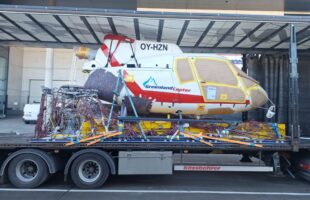

Lim Ching Kiat, managing director for air hub development at Changi Airport Group, shares his insights on sustainability as the airport looks to renew its commitment to making a sustainable Changi a reality.
Can you share how the Changi Airport Group is contributing in making sustainable air transport a reality?
Although airports account for only about 2 percent of global aviation emissions, we form the common platform upon which a multitude of aviation partners operate—from airlines and ground handlers to airport tenants and concessionaires. Apart from reducing Changi Airport Group’s own emissions by optimising the energy consumption of our terminal buildings, we actively engage the airport community in efforts towards a more sustainable Changi.
To realise our common goals of making air transport (passenger and freight) sustainable, we need cleaner fuels to power aircraft, equipment on the ground, as well as to cool and light our terminal buildings. In this journey which will require innovation and effort, we focus on two broad thrusts.
One is reinventing how our partners power their businesses, by supporting airlines’ and ground handlers’ transition away from fossil-based jet fuel and diesel respectively. We work closely with industry and regulatory partners on stakeholder engagement, as well as facilitate trials and studies on infrastructural needs to enable the adoption of sustainable aviation fuel (SAF), renewable diesel and electric ground service equipment. These include the conversion of internal combustion ground service equipment such as baggage tractors and forklifts to electric variants and provision of common-use charging ports.
Then there’s reinventing how we power ourselves. Over 99 percent of CAG’s Scope 1 and Scope 2 emissions come from the use of electricity in operating our terminals. As such, we concentrate our efforts on raising building energy efficiencies through constant upgrading of our systems to the best-in-class energy efficient models. We also seek to expand on-site generation of solar energy, as well as tap potential renewable sources beyond the airport.
There are also similar efforts by our air cargo partners. For example, dnata recently launched a 3.5 megawatt-peak rooftop solar power system across dnata’s cargo and catering facilities at Changi Airport. Some of our partners have started trialing solar-powered equipment at their premises. Specific to the cargo business, we are also facilitating closer industry collaboration through higher end-to-end supply chain visibility. We have put in place processes and protocols that could help improve the overall quality of the supply chain, which prevent degradation of products and reduce wastage. We have also launched initiatives to that attempt to reduce carbon emissions. One such example is the truck dock slot booking (TDSB) application introduced under the Changi Air Cargo Community System (ACCS). By evening out cargo lodgment and collection at the air freight terminals, the application provides greater insights to landside freight movement activities and lead to lesser truck waiting time, hence reducing carbon emissions.
How important is the buy-in of cargo shippers and passengers to push forth with initiatives that will help reach a sustainable future for aviation?
Global organisations are increasingly looking at sustainability factors when making business and supply chain decisions, and they are integrating these considerations into their business operations. Many have also pledged net zero carbon-emission commitments. To this end, they require the support of their suppliers and key stakeholders in the supply chain.
The aviation industry will need a suite of solutions to address different aspects of our business and supply chain. Technology is a crucial enabler. The good news is that there are many solutions being developed, including carbon capture, which is the process of converting carbon dioxide in the atmosphere into feedstock for renewable energy, hydrogen produced in a sustainable manner, SAF etc. The challenge is ensuring scalability and commercial viability. To unlock the full potential of such emerging technologies, partnerships and collaboration across the supply chain stakeholders and among public and private stakeholders are critical. We will also need effective policies to balance the supply and demand of such emerging technologies.
What are the recent developments that would lead to air cargo growth?
Notwithstanding the current disruptive global events such as the Russia-Ukraine war and Covid-19 resurgences, we see some traditional and new business sectors driving positive long-term air cargo growth, especially in the Asia Pacific region. The drivers include pharmaceuticals, high-tech shipments and cross-border e-commerce. With the Regional Comprehensive Economic Partnership (RCEP) coming into effect, we can also expect a boost in regional trade, as well as logistics and distribution activities.









